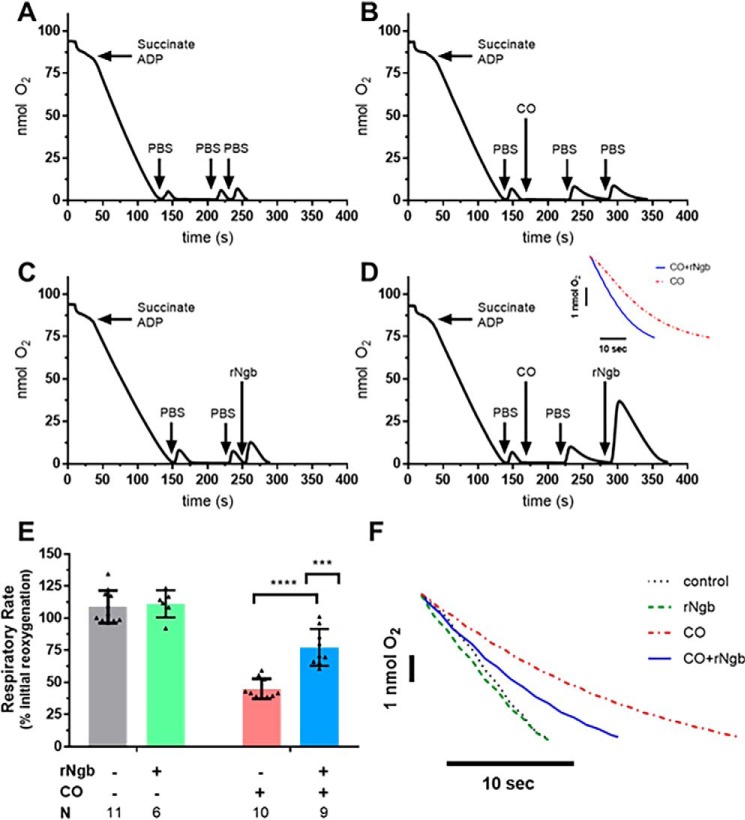Figure 3.
In vitro effects of CO on mitochondrial respiration and reversal by Ngb-H64Q-CCC treatment. Experiments were performed in a similar manner to the NO testing; however, instead of PROLI-NONOate, 100 μl of CO-saturated PBS (to a concentration of ∼160 μm) was added to the chamber. Additionally, because CO has a higher affinity for cytochrome c oxidase in hypoxia, the chamber was left in hypoxia for 60 s before adding additional aerobic PBS. The CO-saturated PBS did not contain oxygen; therefore 50 μl of PBS was added to demonstrate CO-slowed mitochondrial respiration. B, an additional 50 μl of aerobic PBS was used to show persistent inhibition of respiration (labeled raw data). A and C, controls were similar to the NO experiments (Fig. 2): no exposure to CO or Ngb-H64Q-CCC and addition of 100 μm Ngb-H64Q-CCC without the presence of CO. D, to demonstrate the effect of Ngb-H64Q-CCC, in the final step, instead of PBS, aerobic, oxygen-bound Ngb-H64Q-CCC was added to a concentration of 100 μm to the chamber. This increased the oxygen concentration in the chamber, and the mitochondria respired at an increased rate (labeled raw data). Inset, comparison of CO-inhibited respiration versus Ngb-H64Q-CCC–treated post-CO exposure respiration). E, Control rates had little effect of respiration versus initial reoxygenation. Exposure to CO with reoxygenation by aerobic PBS decreased respiration to 45 ± 8% of the initial rate. In mitochondria that were exposed to CO but treated with Ngb-H64Q-CCC, respiration was 77 ± 14% of the initial rate (unpaired Student's t test CO-exposed and CO-exposed, Ngb-H64Q-CCC–treated mitochondria; p < 0.0001, ****). In an unmatched regular two-way ANOVA, we determined that there was a significant interaction between Ngb-H64Q-CCC and exposure to CO (interaction term; ***, p = 0.0007; single line) (F, representative raw traces compared). rNgb, Ngb-H64Q-CCC.

